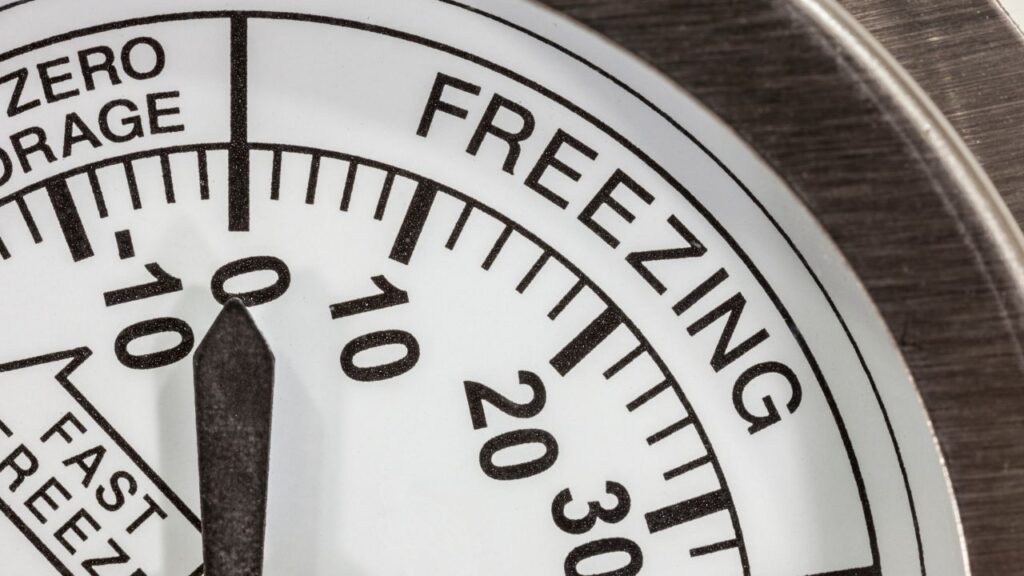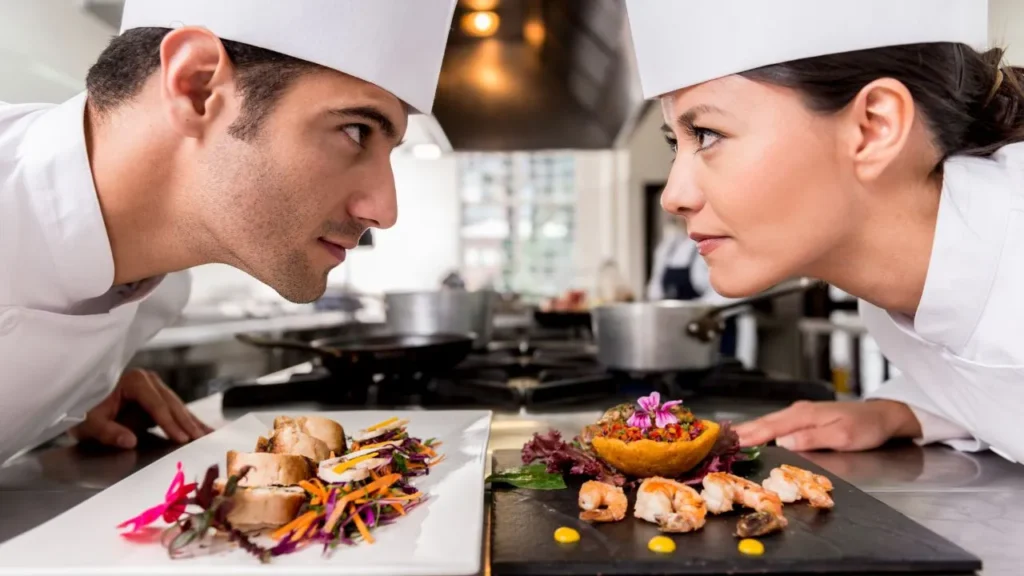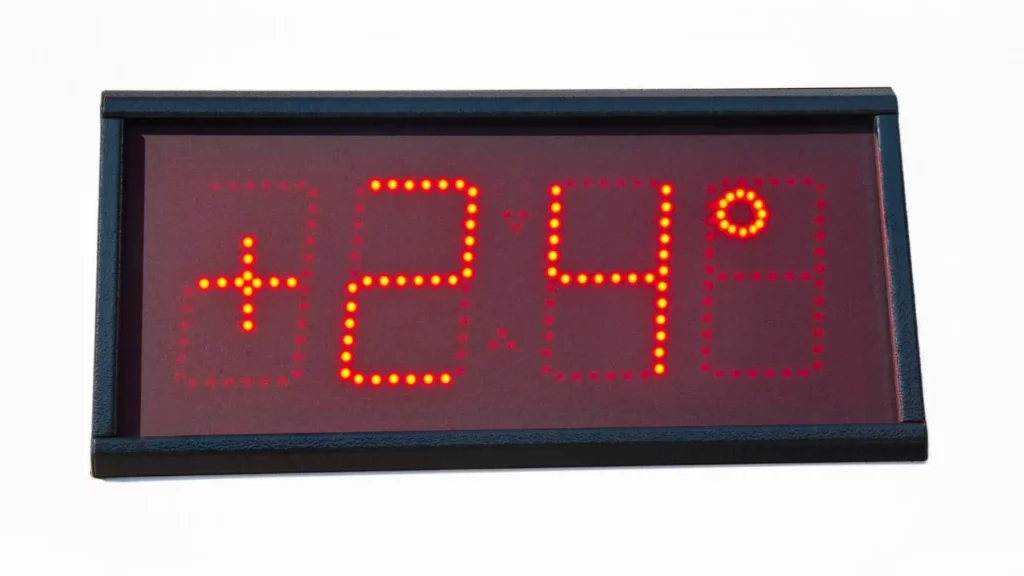As a chef who’s spent countless hours in professional kitchens, I can tell you that a reliable walk-in cooler thermometer is one of the most important tools we have. Let me break down everything you need to know about these essential devices.
Why Your Kitchen Needs a Good Thermometer
Let me be straight with you – a walk-in cooler thermometer isn’t just another gadget. It’s your first line of defense against food spoilage and waste. In my kitchen, we rely on it to keep thousands of dollars worth of ingredients safe and fresh.
Think about it this way: without knowing the exact temperature of your cooler, you’re basically cooking blind. You wouldn’t guess the temperature of your oven, so why guess with your cold storage? Every degree matters when you’re storing expensive meats, seafood, dairy, and produce.
The best part of having a reliable thermometer is the peace of mind it brings. When I leave my kitchen at night, I know my ingredients will be safe until morning. That kind of confidence is priceless in our business.
Types of Thermometers
Digital vs. Old-School Analog
I’ve used both types in my career, and they each have their place. Digital thermometers are like having a smart phone – they give you exact readings instantly and some even send alerts to your phone. They’re great, but they need batteries and can sometimes get quirky in humid conditions.
Analog thermometers (the ones with the dial) are like your trusty old knife – simple but reliable. They don’t need batteries and are usually cheaper. The downside? They’re not as precise, and you have to get close to read them.
What Features Matter Most
From my experience, here’s what really counts in a good thermometer:
- Easy-to-read display (you don’t want to squint at tiny numbers during a busy service)
- Strong build (kitchen equipment takes a beating)
- Quick readings (because who has time to wait around?)
- Water-resistant design (kitchens get messy)
- Long battery life for digital models (changing batteries frequently is a pain)
- Wide temperature range (usually -40°F to 140°F)
- Large, clear numbers (visible even in dim cooler lighting)
Setting Up Your Thermometer Right

Let me save you some headaches with proper installation tips. Mount your thermometer at eye level – trust me, you don’t want to bend down every time you need to check it. Keep it away from the door where temperatures fluctuate the most.
Make sure it’s secured well. I’ve seen thermometers get knocked off by busy prep cooks carrying boxes, and that’s money down the drain. Install it where it won’t get bumped but is still easy to read.
Best Placement Spots
The sweet spot for your thermometer is about 5 feet off the ground, away from:
- Air vents (they can give false readings)
- Door openings (temperature changes too much here)
- Back walls (where frost can build up)
- Direct contact with stored food (which can block airflow)
Keeping Your Thermometer Working Right
Regular Cleaning and Care
Just like your knives, your thermometer needs regular care. I clean mine weekly with a damp cloth and mild soap. Don’t submerge it in water – that’s a quick way to ruin it. A gentle wipe-down is all it needs.
Keep an eye out for frost buildup around the sensor. This can throw off your readings and needs to be carefully removed. A soft cloth works best – never use sharp objects that could damage the thermometer.
Calibration is Key
Here’s something many people skip: calibration. Think of it like sharpening your knives – it needs to be done regularly to maintain accuracy. I check calibration monthly, or immediately if I notice any odd readings.
For analog thermometers, you’ll need a calibration tool and some patience. Digital ones often have a calibration button, but check your manual for the exact process. If you’re not comfortable doing this yourself, most equipment companies offer calibration services.
Food Safety and Your Bottom Line

Let me tell you why this matters to your wallet. One failed health inspection or one batch of spoiled proteins can cost you thousands. A good thermometer helps prevent both.
I’ve seen kitchens throw out entire coolers of food because their thermometer wasn’t working right and temperatures got too high. That’s real money going straight into the garbage.
The Real Cost of Temperature Problems
Let’s break down what can happen with poor temperature control:
- Spoiled ingredients need replacement
- Extra staff hours for cleaning and reorganizing
- Emergency maintenance calls
- Potential health code violations
- Risk of foodborne illness
- Damage to your reputation
Energy Savings
Here’s a bonus many chefs don’t think about: a properly monitored cooler saves energy. When your cooler runs at the right temperature, it doesn’t have to work as hard. That means lower energy bills and less wear on your cooling system.
I’ve seen energy bills drop by 10-15% just by maintaining proper temperatures. Over a year, that adds up to serious savings.
Training Your Team

Your thermometer is only as good as the people using it. I make sure every new staff member knows:
- Where the thermometer is located
- What the correct temperature range should be (usually 38-40°F for most coolers)
- When to check it (at least at the start and end of each shift)
- Who to alert if there’s a problem
- How to log temperatures in our safety records
- What to do if temperatures are out of range
- How to spot signs of thermometer malfunction
Creating a Temperature Check Routine
We use a simple system in my kitchen:
- Check temperatures at the start of each shift
- Record readings in a log book
- Check again before closing
- Note any unusual patterns
- Report problems immediately
Troubleshooting Common Problems
After years in the kitchen, here are the most common issues I’ve seen:
- Inaccurate readings (usually needs calibration)
- Foggy display (usually from humidity)
- Slow response time (might need a battery change in digital models)
- Physical damage (needs replacement)
- Inconsistent readings (could be air flow problems)
- Frost buildup (needs gentle cleaning)
The Latest Tech

The newest thermometers can do some pretty cool stuff. Some connect to your phone and alert you if temperatures drift too high. Others keep digital logs for health inspections. While these features are nice, remember that reliability is still the most important thing.
Smart Features Worth Considering
Today’s high-end thermometers offer:
- Wireless monitoring
- Temperature logging
- Mobile alerts
- Cloud data storage
- Multiple sensor points
- Remote adjustment capabilities
Final Thoughts
A good walk-in cooler thermometer is like a silent partner in your kitchen – when it’s doing its job right, you hardly notice it’s there. But without it, you’re putting your food, your customers, and your business at risk.
Remember, this isn’t just about following health codes. It’s about running a professional kitchen that you can be proud of. Take care of your thermometer, and it’ll take care of your food.
From one chef to another, don’t cut corners on this essential piece of equipment. The peace of mind alone is worth the investment, and the money you’ll save on prevented food waste will pay for it many times over.
In the end, your thermometer is one of those unglamorous but crucial tools that keeps your kitchen running smoothly. Treat it with respect, maintain it well, and it will serve you faithfully through countless services.
FAQ
What temperature should a walk-in cooler be set at?
Walk-in coolers should typically be set at 35°F (1.7°C) for optimal food storage and safety. This temperature helps prevent bacterial growth while maintaining food quality.
How often should I calibrate my walk-in cooler thermometer?
Regular calibration is essential for accuracy. Calibrate your walk-in cooler thermometer at least once a month, or more frequently if recommended by the manufacturer. This ensures reliable temperature readings and helps maintain food safety standards.
What features should I look for in a walk-in cooler thermometer?
Look for a thermometer with high accuracy, durability, and a wide temperature range. Digital thermometers often provide the most precise readings. Consider features like water resistance, auto-off functions, and easy-to-read displays]. For commercial kitchens, wireless options allowing real-time monitoring can be beneficial.
Resources
https://polarking.com/frequently-asked-questions-faqs-about-walk-in-freezers
https://www.thermokool.com/faq
https://master-bilt.com/general-information/news/walk-in-cooler-and-freezer-faqs/








